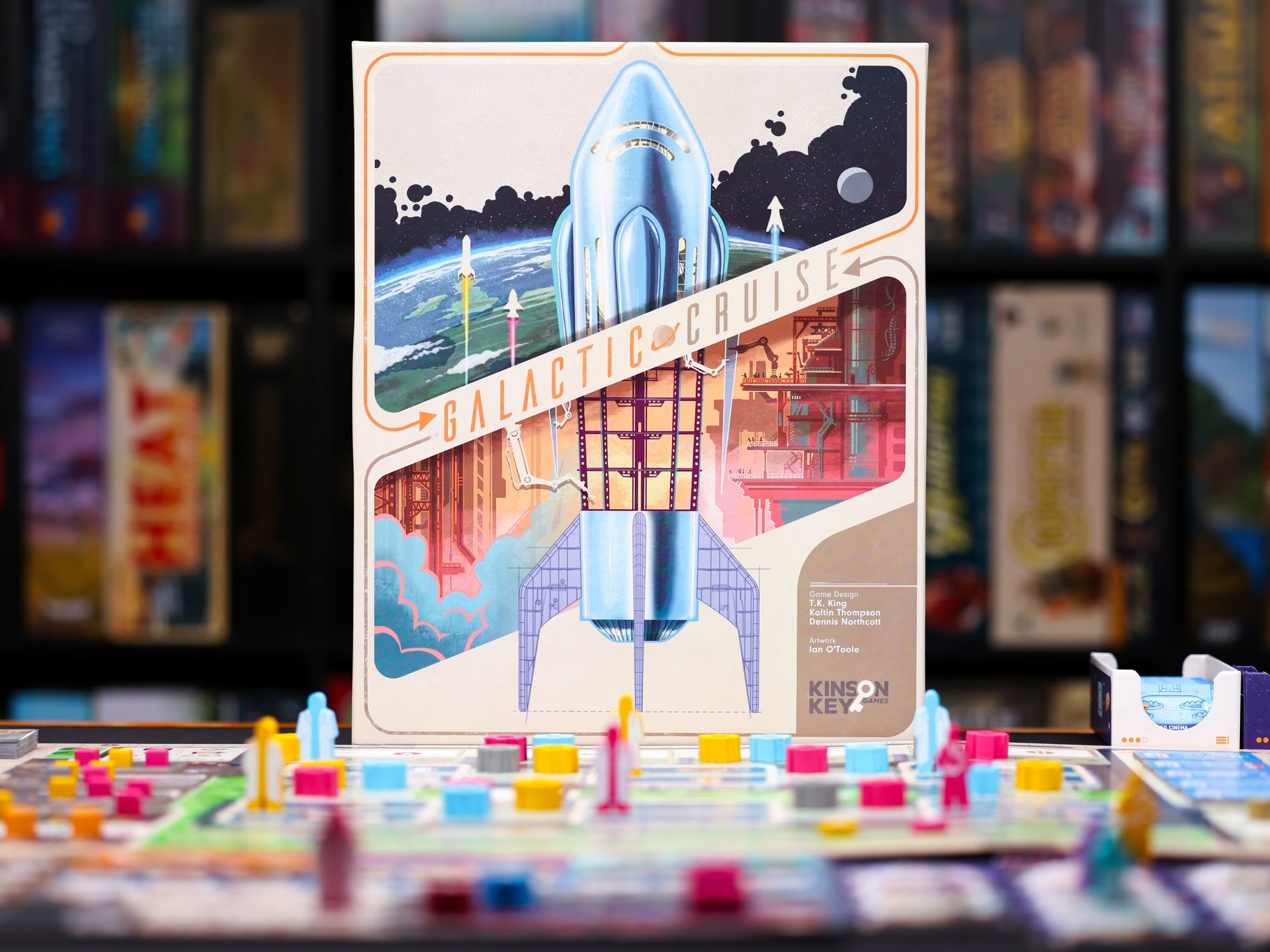Galactic Cruise is a crunchy euro game for 1-4 players. It combines worker placement, resource management, and launching space cruises to compete for the most victory points.
Gameplay
The worker placement mechanics are fantastic. On your turn, you place a worker on an action space and take two actions, either from that space or from any space connected to it by a technology token. Using your own technology tokens is free, but you have to pay other players to use their links. This encourages you to build your own technologies, not just to avoid fees, but because each new tech token removed from your board expands your resource storage capacity. Even better, action spaces are never blocked. Instead, placing a worker on an occupied space bumps the existing worker, rewarding its owner with a funding bonus (resources or victory points).
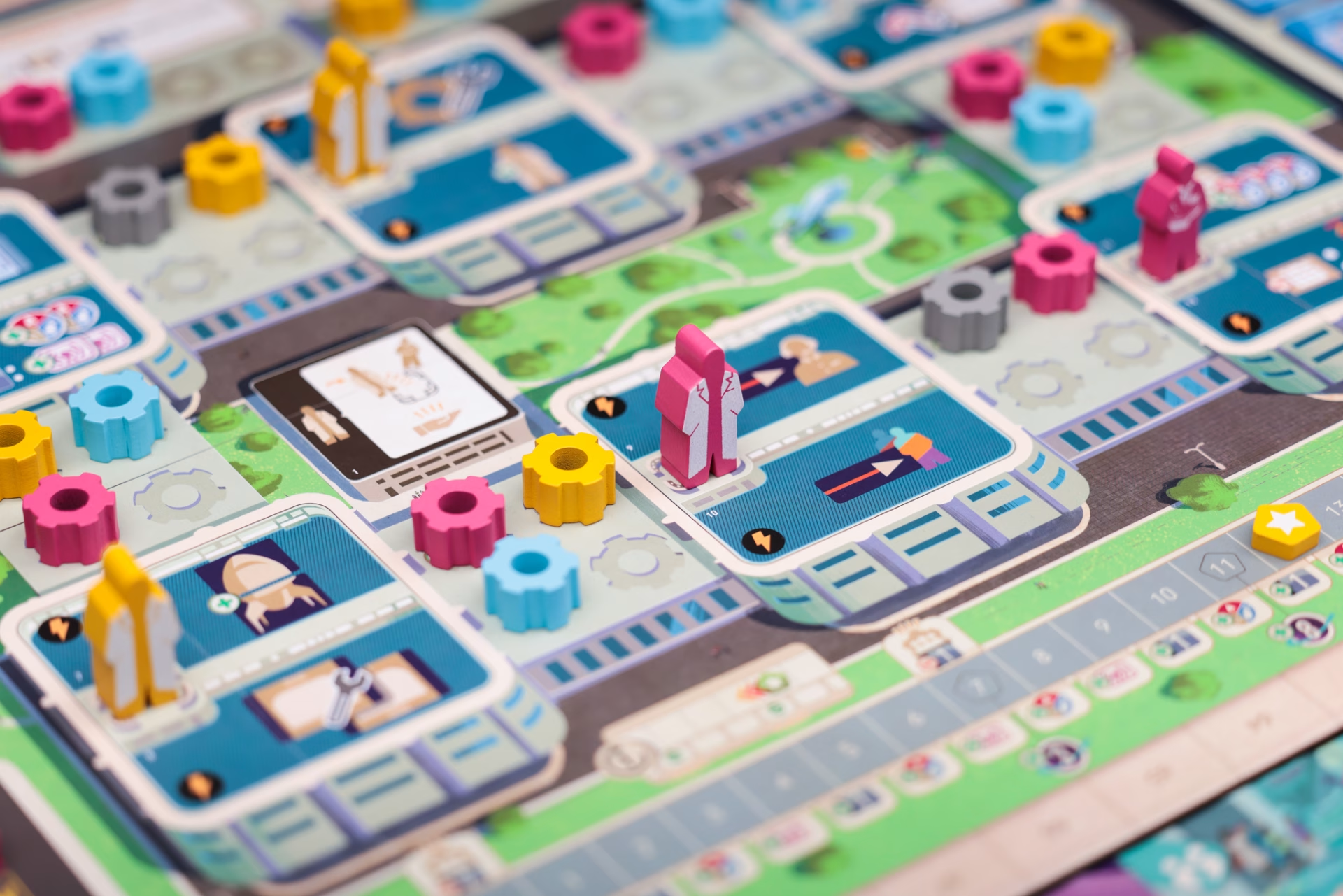
Another core concept that influences gameplay in multiple ways is reputation. Advancing on the reputation track earns you victory points during intermittent scoring and at the end of the game, but it also has two key benefits: it reduces the cost of using your opponents’ technologies, and you can spend it to gain resources in emergencies. Additionally, some game effects let you trade reputation for powerful benefits. This creates a constant tug of war. Do you push for higher reputation (and victory points), or spend it for short-term gains? Every decision feels impactful.
Galactic Cruise delivers an incredibly satisfying progression through multiple interlocking systems. You begin with two basic workers and can hire two expert workers. Each game features different expert powers that significantly impact your strategy. More workers mean fewer turns wasted recalling them. Ship upgrades increase passenger capacity, leading to more lucrative cruises with better rewards. Technologies grow more expensive but unlock crucial advantages: easier access to more actions, expanded storage, and access to four permanent upgrades that vary each game.
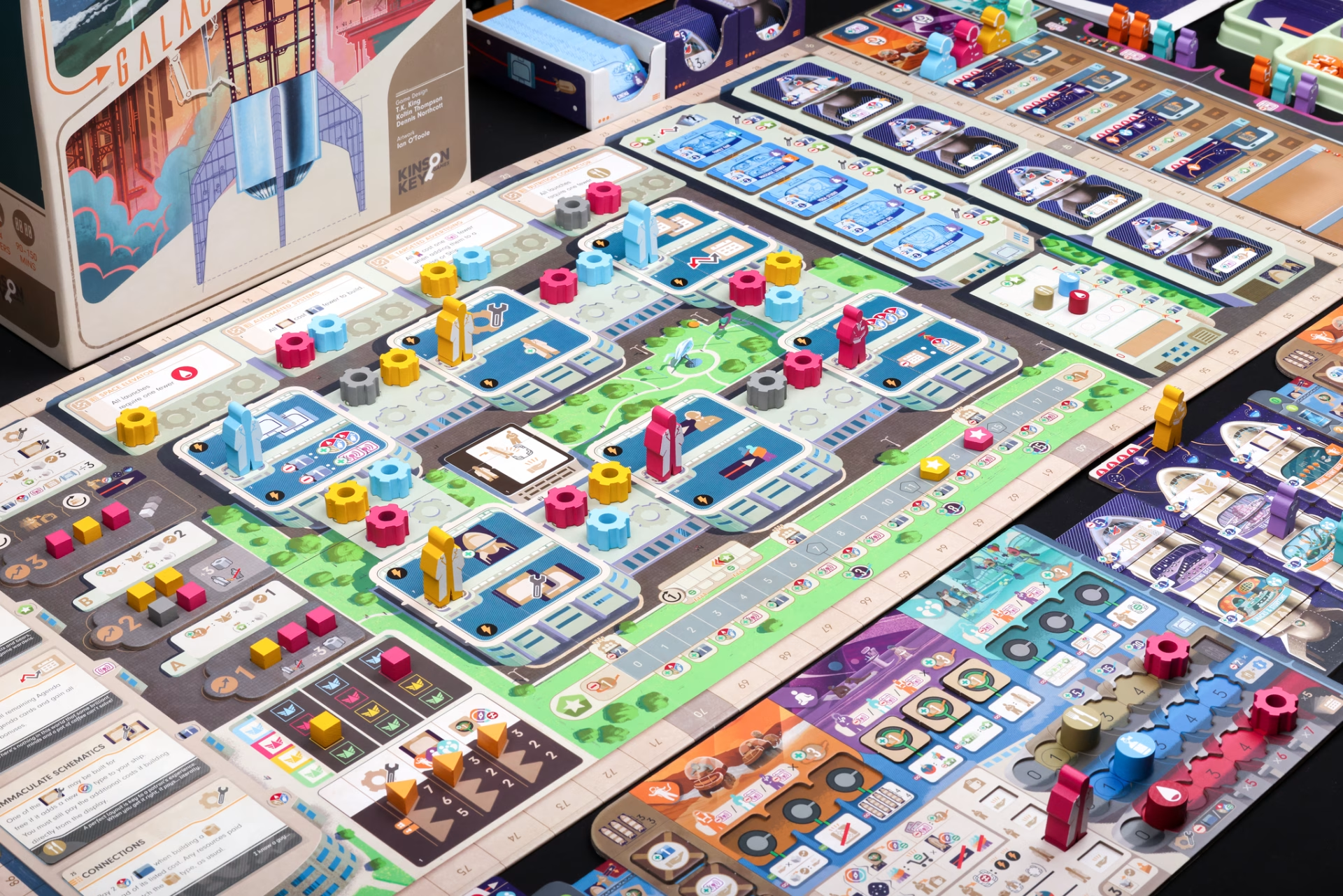
The most exciting progression comes from cruise destinations. When you remove a tile from your player board, it provides either a one-time bonus or an ongoing benefit. You then deliver that tile to one of nine destination spots on your board and unlock powerful abilities. Each destination has its own unique effects, and the more tiles you deliver to a location, the stronger it becomes. This creates a compelling choice. Do you spread your tiles across many destinations for flexibility in cruise planning, or focus on supercharging one or two locations? With all the available paths to explore, combined with worker upgrades, ship improvements, and technology development, every game delivers a deeply rewarding engine-building experience.
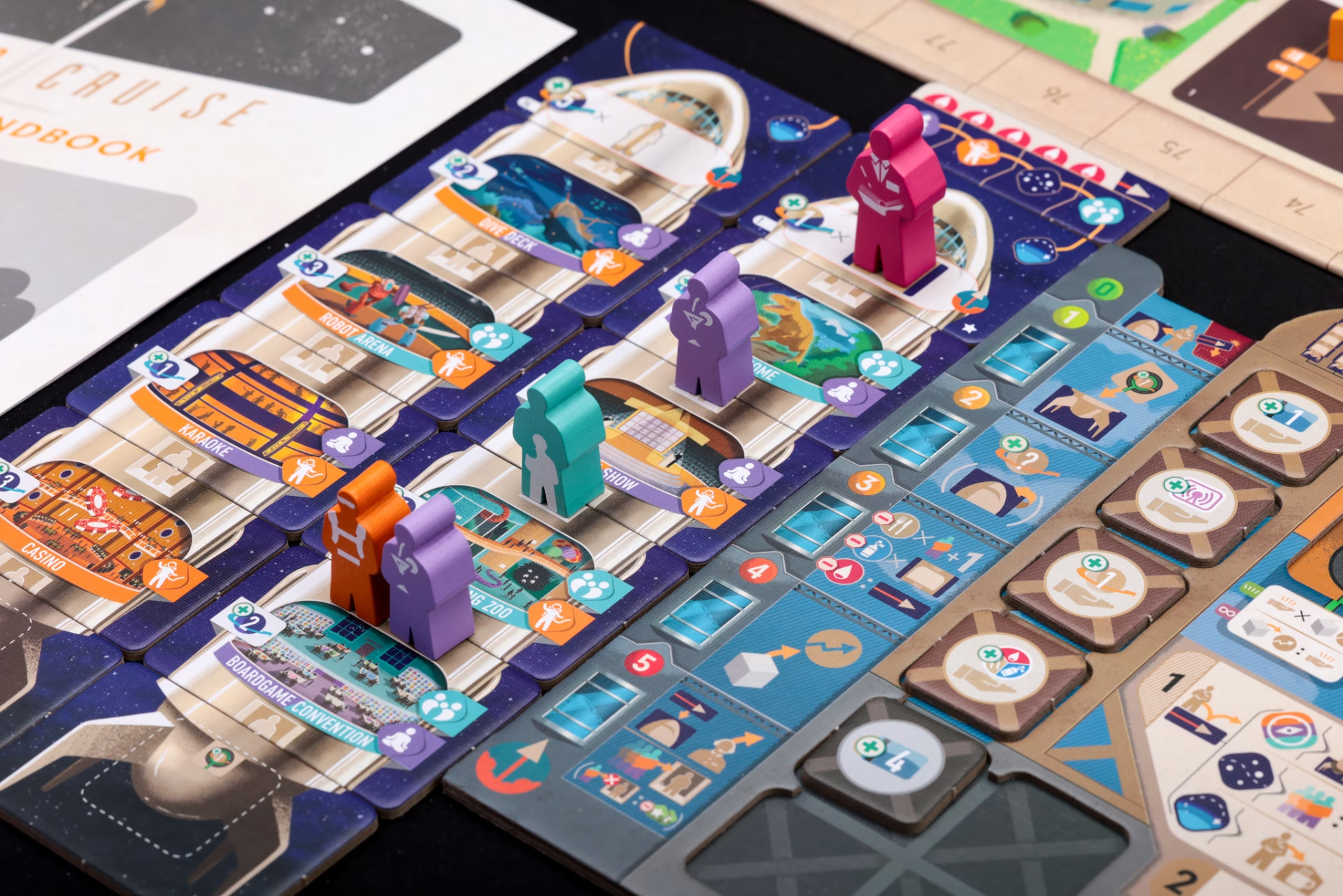
Agenda cards are another great feature. Each one offers such wildly powerful rule-breaking effects that selecting just two from the display when taking the ‘Draw Agenda Cards’ action feels impossible. Because of that, you might end up changing your plans and pursuing these cards to achieve your goals through them, especially when the display is refilled and offers more options.
The game brilliantly incentivizes refilling the resource silo and agenda card display. The rewards for these actions increase the longer you wait, and more resources and cards are claimed. But wait too long, and another player might refill them first. This creates perfect tension between risk and reward while naturally balancing the availability of resources and cards during the game.
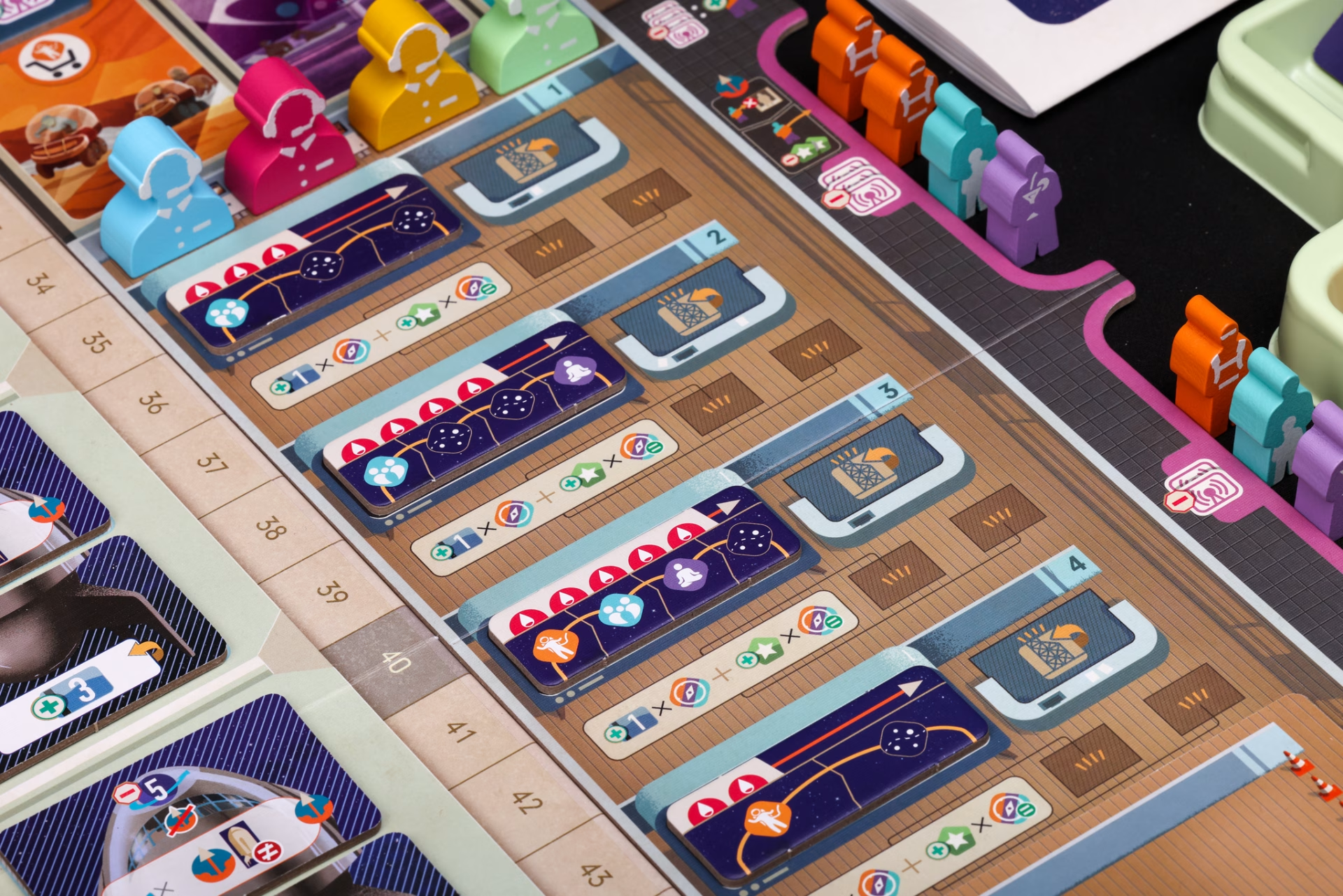
The most enjoyable, and also initially confusing, part of the game is building and launching ships. A lot of planning goes into launching a cruise. First, you must add segments to your ship to host travelers. Then, you need to schedule a cruise and advertise to travelers. After everything is ready and you have enough food, fuel, and oxygen for the trip, you can launch the ship as your main action. One of your workers becomes the pilot, so you’ll be short one worker until the ship returns to Earth. This process involves planning ahead and taking actions during multiple turns, and rewards you with resources and victory points. Executing a flawlessly planned cruise is deeply satisfying.
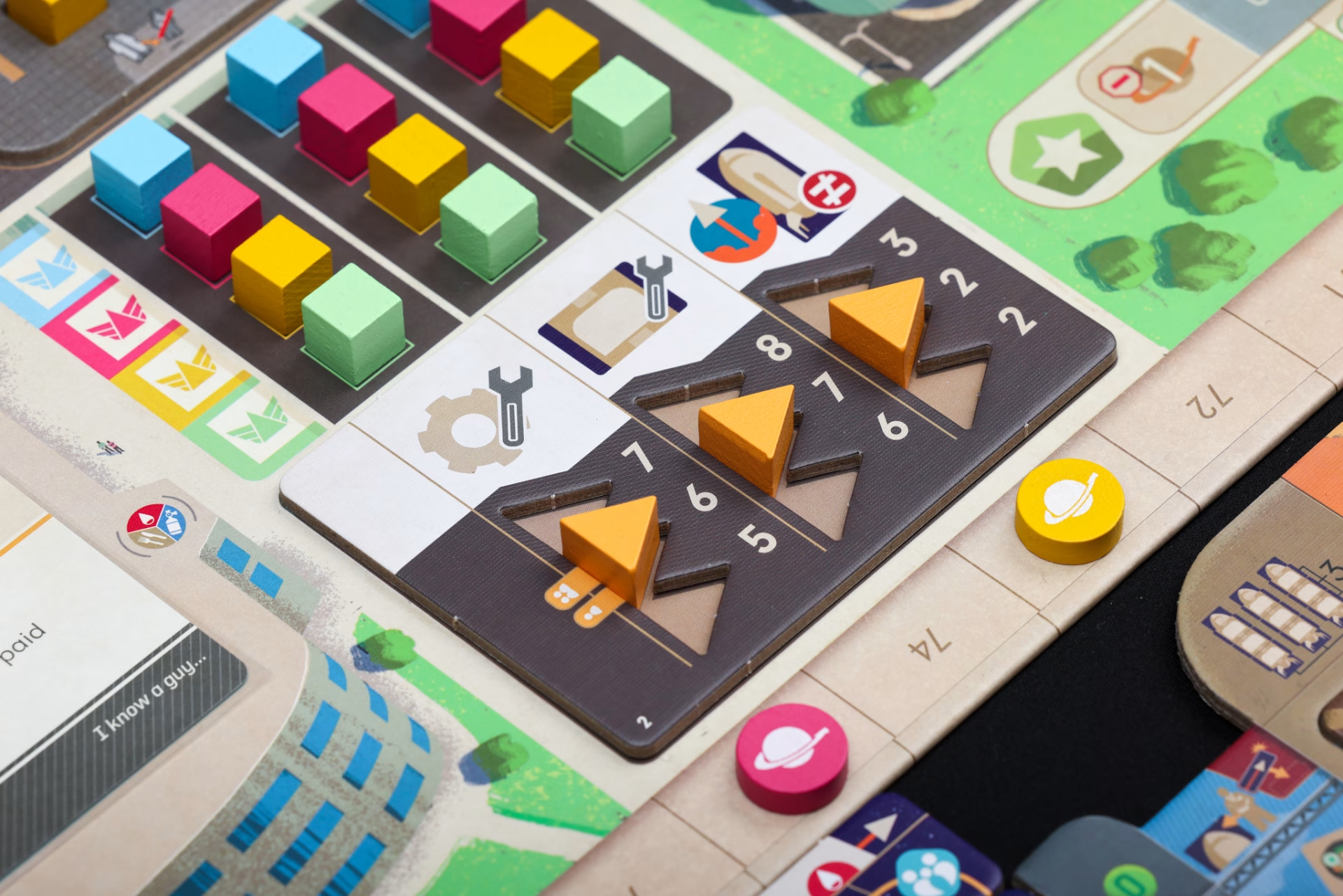
Three randomized company goals (picked during setup) create shared objectives for all players. Each time a player completes a goal, its requirements become harder for others to achieve. This creates intense competition as players race to complete goals before they grow too demanding.
The Progress Track serves as the game’s timer and is divided into three sections. Each time a company goal is completed or a shuttle launches, a cube is added to the track. When a section is filled, intermittent scoring happens. Players earn points based on their total cubes and completed company goals, with bonus points for the highest reputation. This system keeps the game moving at a steady pace. While players could theoretically delay progress to build better ships, the competition to add cubes to the track moves the game forward.
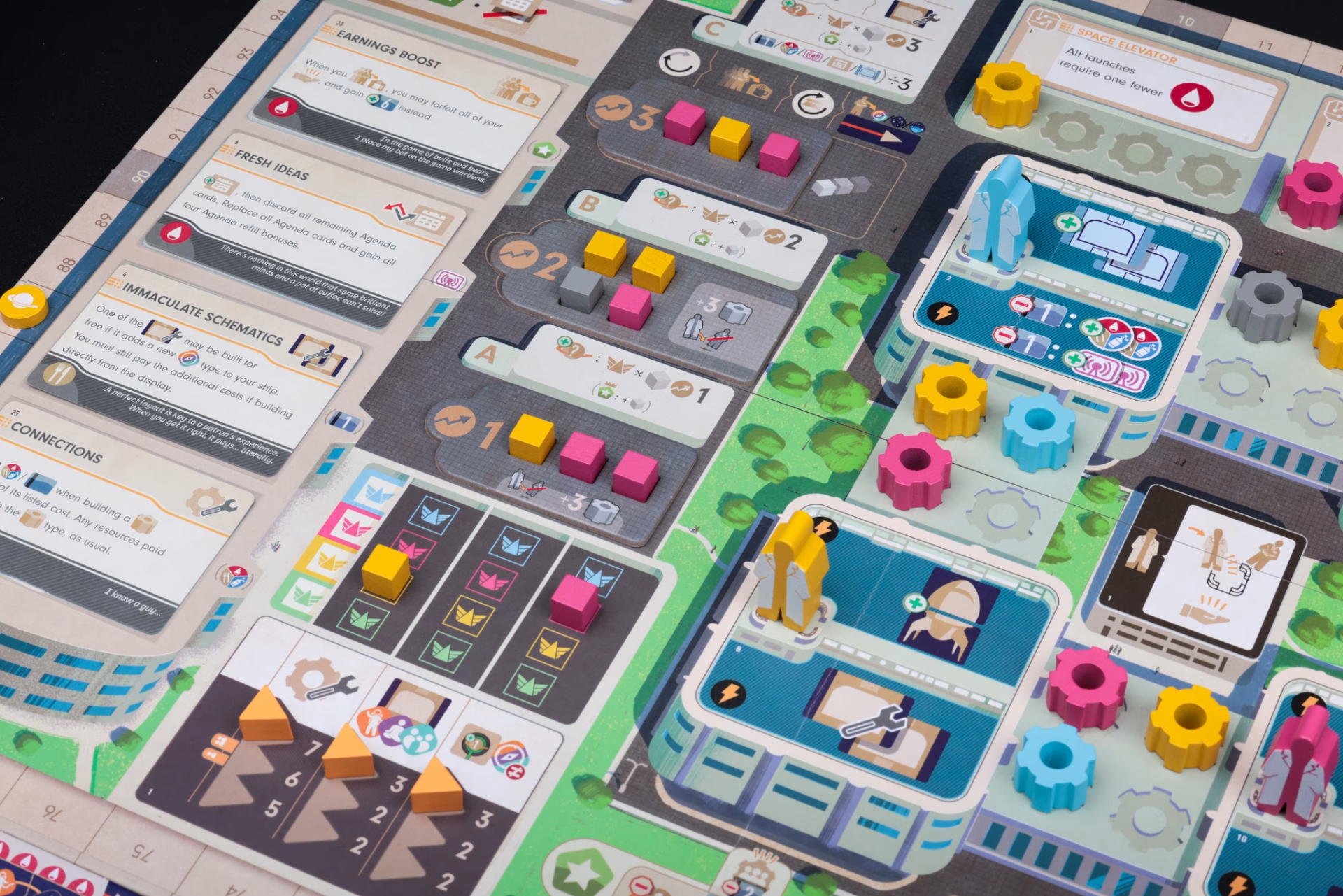
While the rulebook is nearly 50 pages and the game might seem intimidating at first, most of the rules are intuitive and can be taught step by step by explaining each action. The only confusing part is the process of launching a cruise and what happens in space. But even those rules become second nature after one or two games. The rulebook is excellent and includes many examples with pictures, so don’t let its size give you the wrong impression. Also, if you don’t want to read the rulebook, you can watch the official tutorial video, which covers all the rules.
Besides the outstanding gameplay, Galactic Cruise offers tons of variety. Action spaces are shuffled during setup, and each game features different technology tiles, expert worker powers, and company goals. During play, new agenda cards, ship segments, and cruise tiles also enter the game. All of this ensures strong replayability over many sessions.
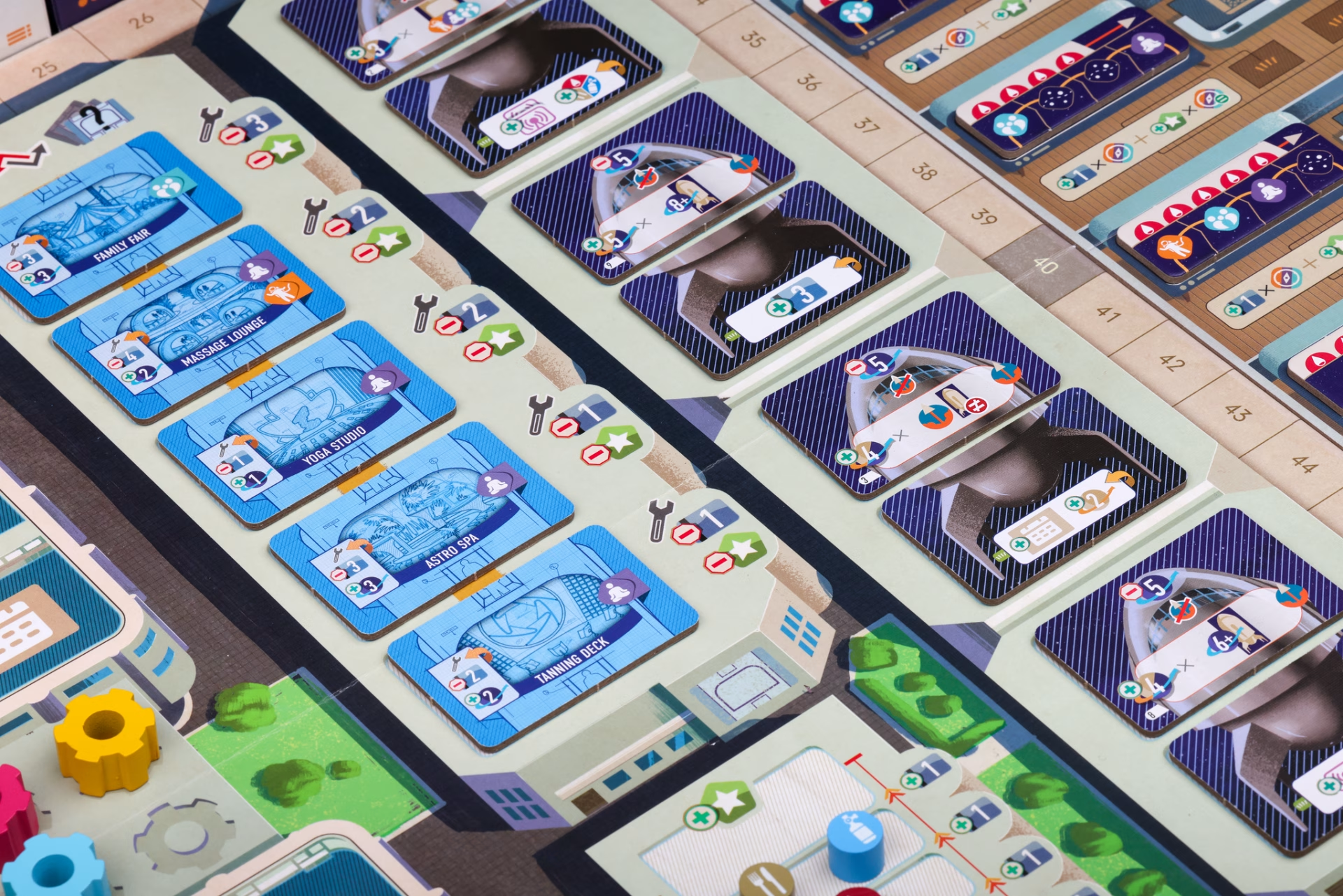
Player Scaling
I played Galactic Cruise solo several times to learn the rules before our multiplayer games. The solo mode sets up like a two-player game, with an AI opponent that operates differently from human players. The bot reveals cards to determine its actions: it bumps your workers, you can bump its workers, and it launches ships. While I enjoyed the solo experience, the bot has many rules and exceptions to remember. You’ll learn them after a few plays, but they’re complex enough that I’ll likely forget them by the time I get the game to the table again. Because of this, I wouldn’t recommend buying the game just for solo play.
Personally, I prefer beat-your-own-score solo modes over competing against AI opponents. Galactic Cruise would work wonderfully with a simpler solo system, perhaps just a deck that bumps your workers occasionally while letting you focus on your own game. A quick-reference guide for the solo rules would also be helpful.
The two-player version (which uses the same setup as solo) includes a dummy player that places technologies and bumps workers. While this dummy has little impact on the game and two-player games are still enjoyable, the game truly shines at three or four players, where you don’t need the dummy.
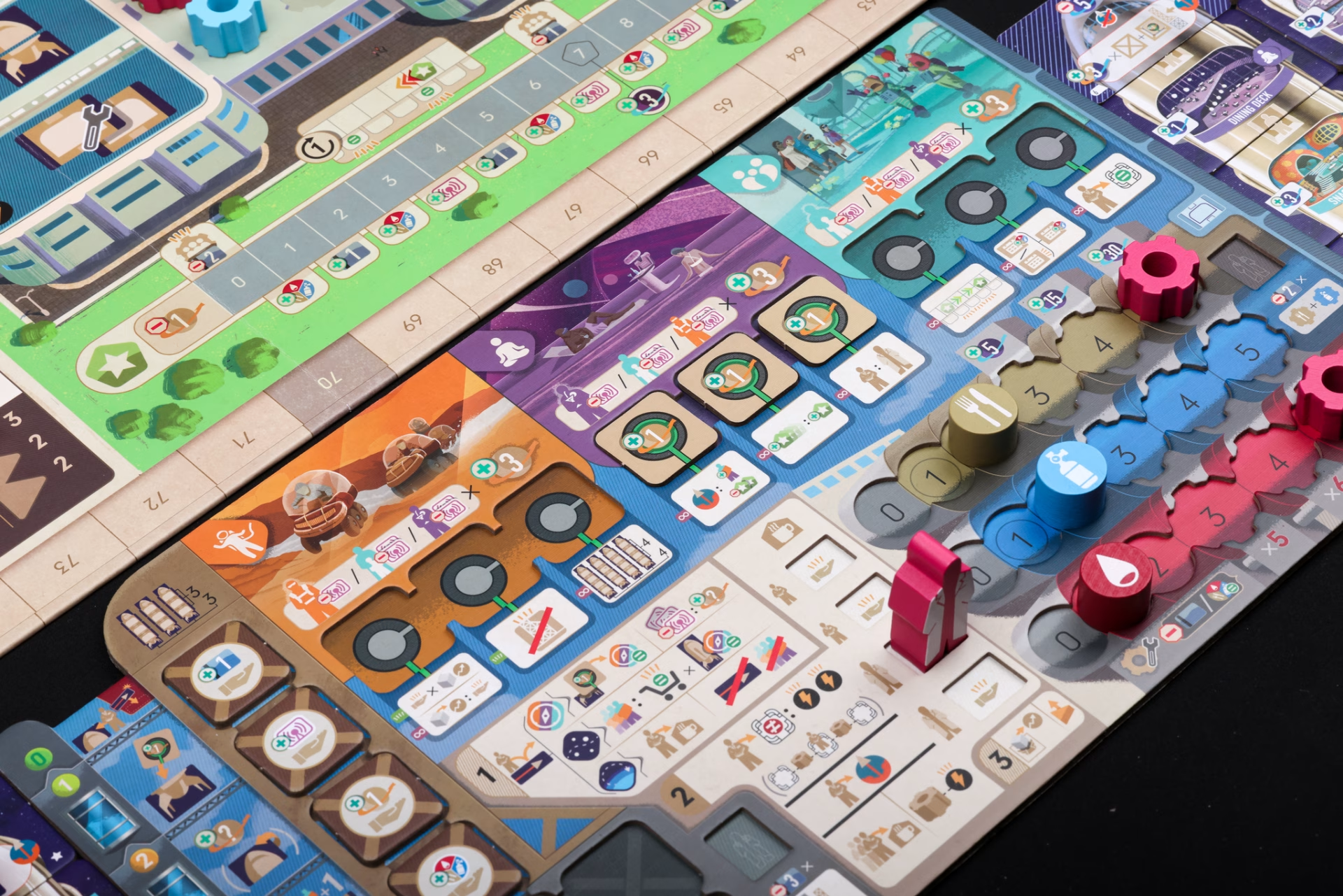
Components and Graphic Design
The component quality matches the excellent gameplay. As always with Ian O’Toole’s graphic design, it’s not just beautiful but also highly functional. While there’s some iconography to learn initially, both the player board and main game board clearly summarize most rules.
Every component feels premium. The included organizer fits everything perfectly, including sleeved cards, with removable trays for resources and player pieces. No matter how you store the box, components stay secure. The dual-layer player boards are excellent, with recessed spaces that hold worker meeples, technology cogs, and tiles. A comprehensive player aid rounds out the package by listing all essential game information that eliminates the need to constantly reference the rulebook during the first few games.
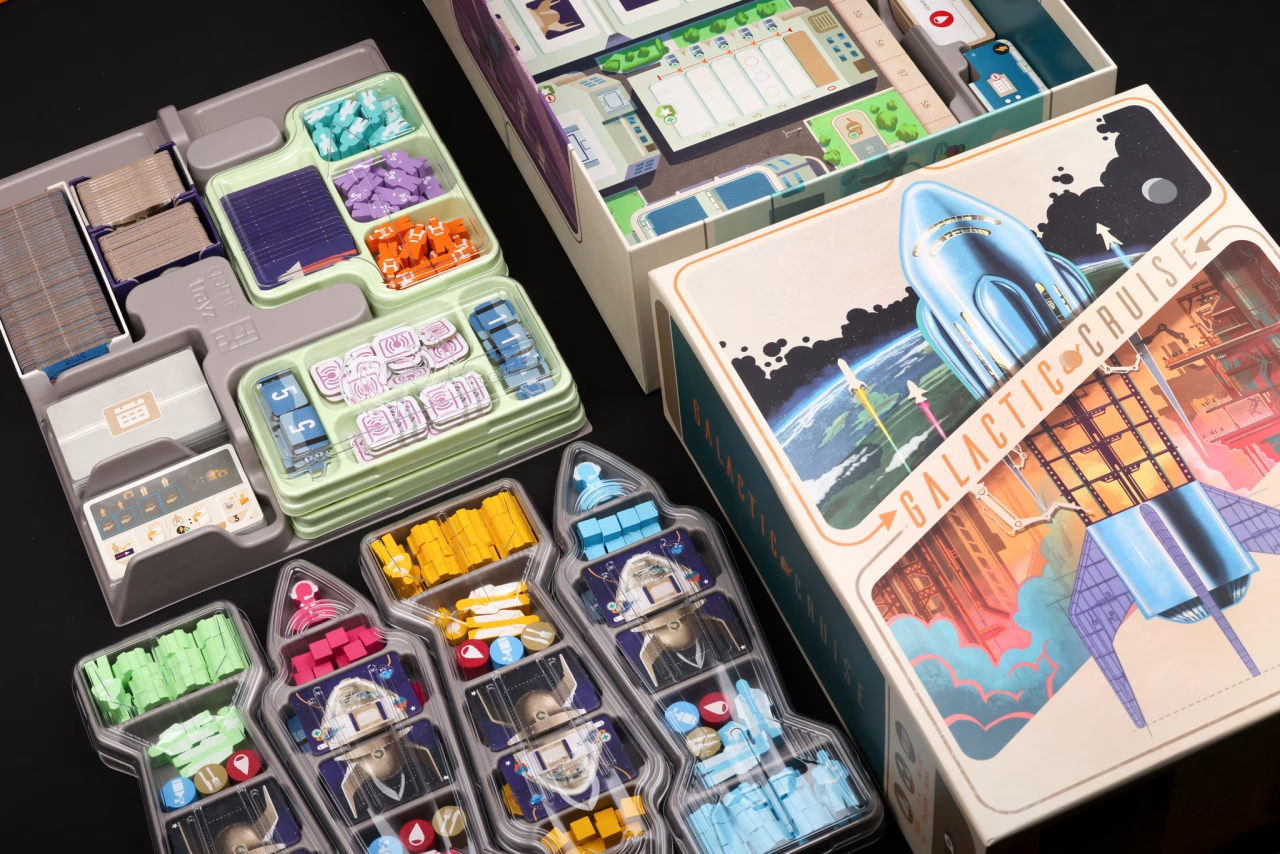
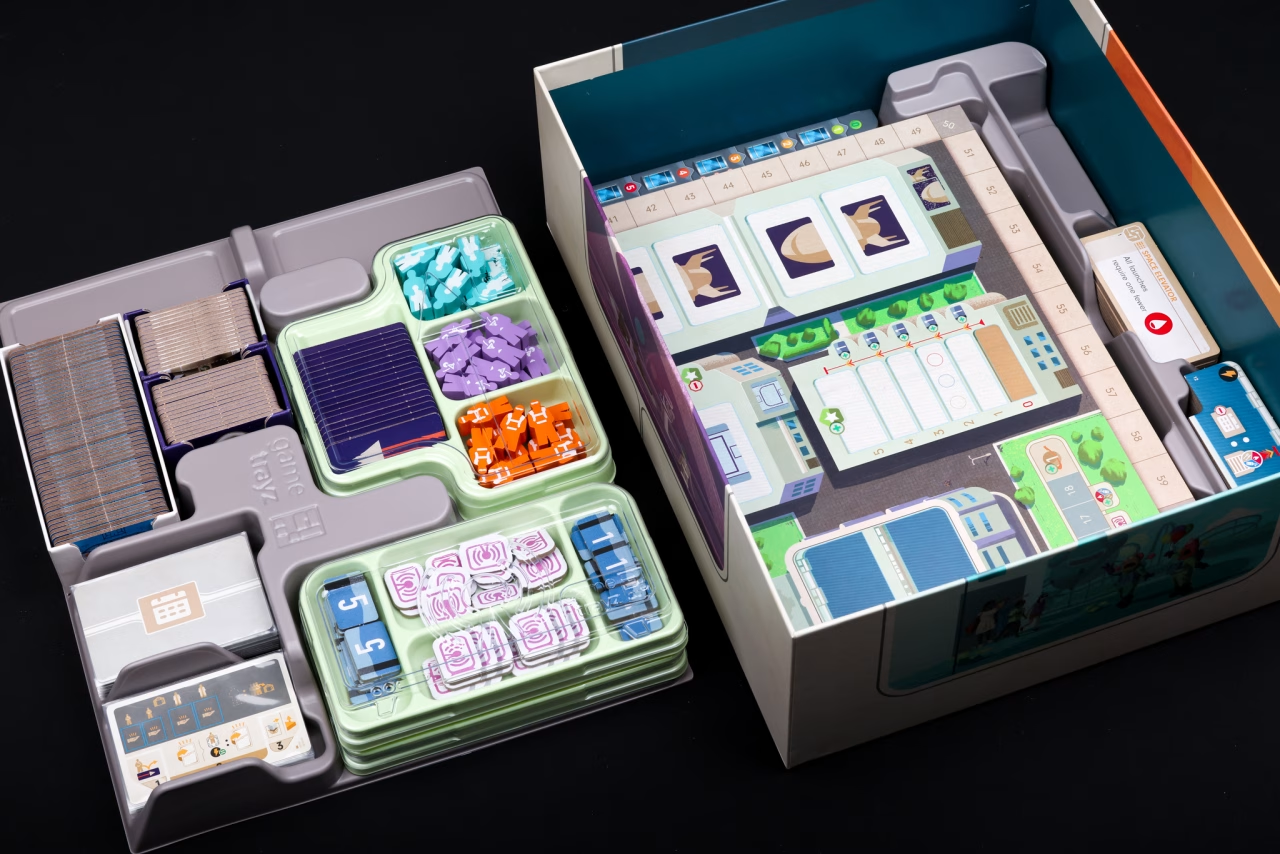
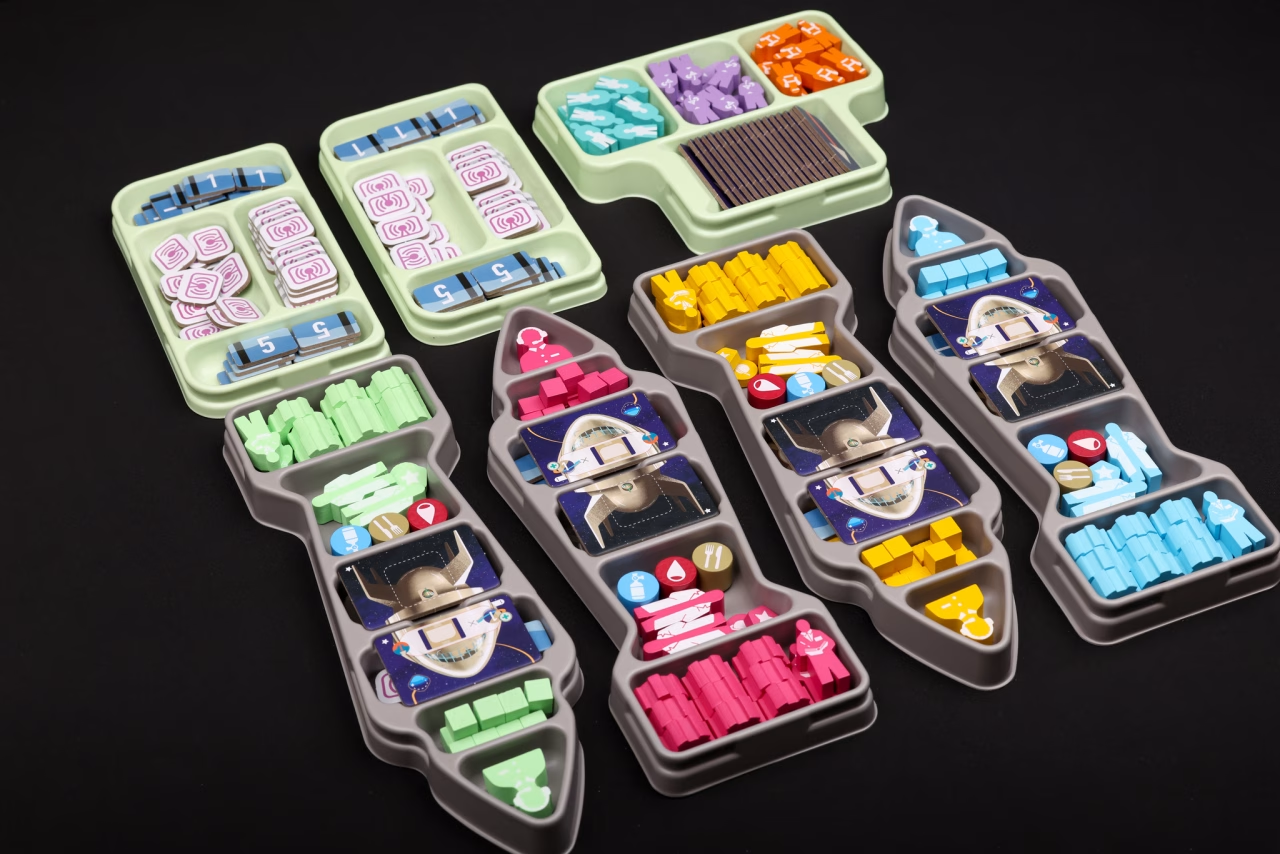
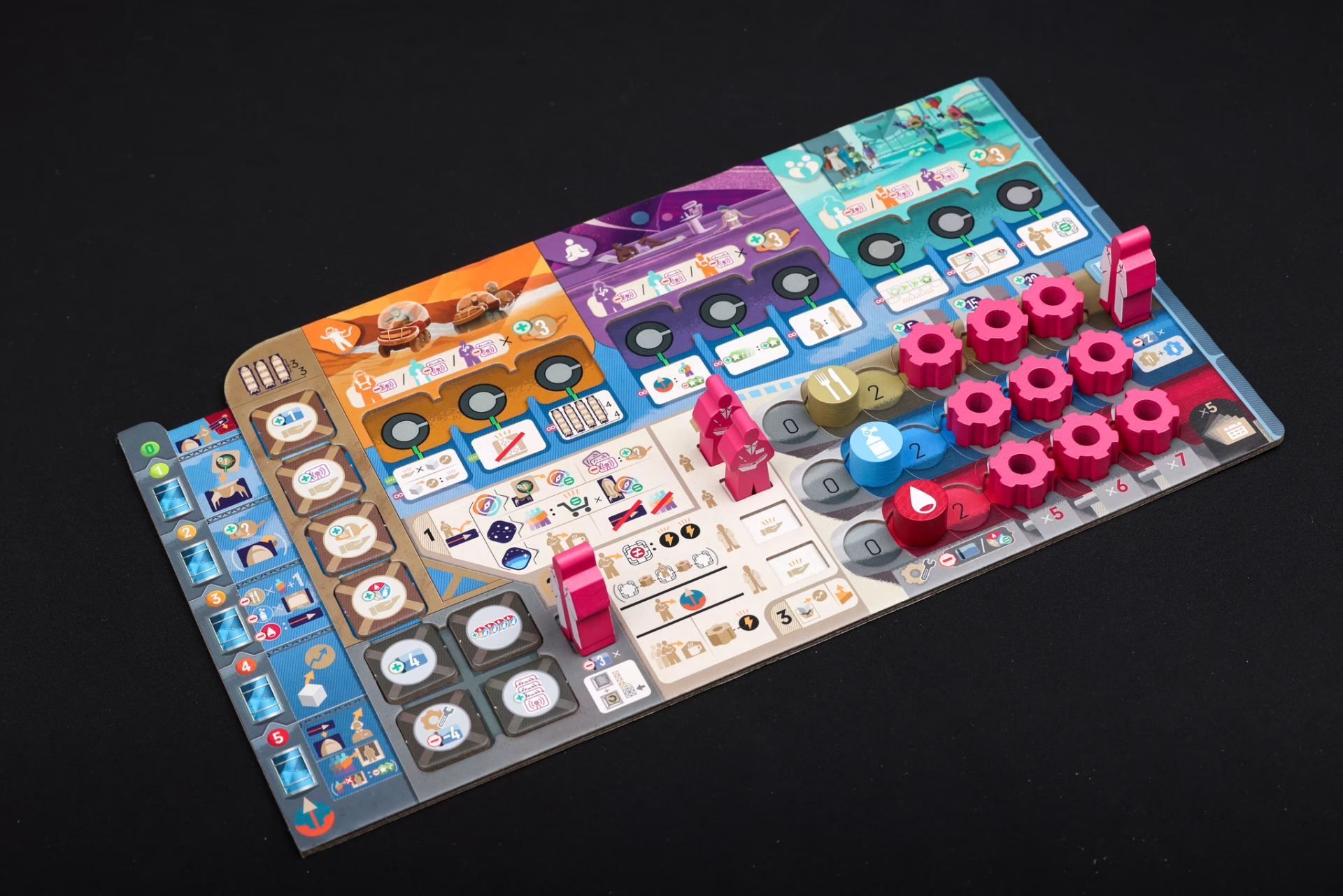
Final Thoughts
Galactic Cruise stands among the best heavy euro games available today. It combines excellent mechanics, deeply engaging gameplay, and superb production quality into what feels like a near-perfect package. Every detail shows this was designed by gamers, for gamers. It delivers such a satisfying experience that you’ll immediately want to play again after each play. If you enjoy heavy euro games, this is an absolute must-have.
Disclosure: We received a review copy of this game. Also, there may be an affiliate link in the links included at the end of this article.
Discover more from BoardGameShots
Subscribe to get the latest posts sent to your email.
